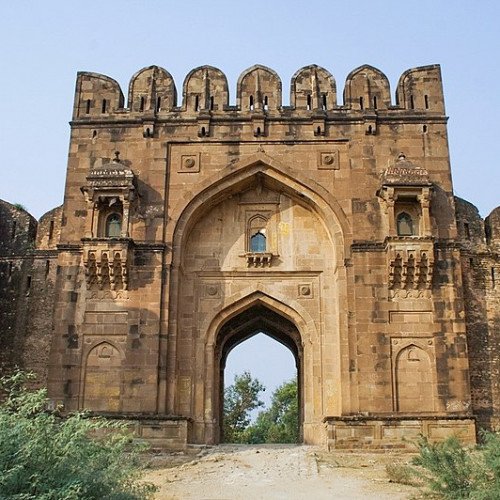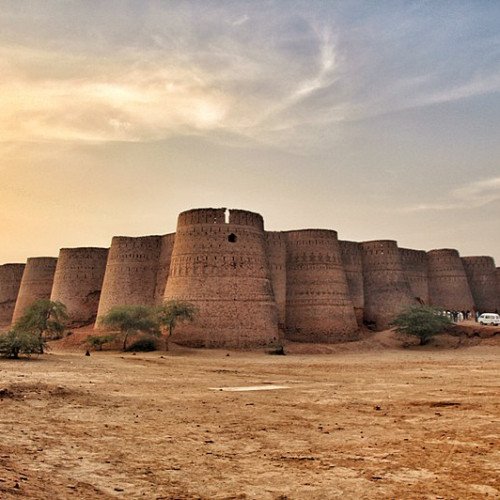Castles of "Pakistan" ROHTAS FORT vs DERAWAR FORT

ROHTAS FORT
Rohtas Fort (Punjabi, Urdu: قلعہ روہتاس; Qila Rohtas) is a 16th-century fortress located near the city of Jehlum in the Pakistani province of Punjab. The fort is one of the largest and most formidable in the subcontinent. Rohtas Fort was never stormed by force, and has survived remarkably intact. The fortress was built by Raja Todar Mal on the orders of Sher Shah Suri, partly to suppress the local Khokhars tribes of then Potohar region. Some Khokhar tribes were allies of the Mughal Empire, and refused to recognize the suzerainty of Sher Shah Suri. The fort is known for its large defensive walls, and several monumental gateways. Rohtas Fort was inscribed by UNESCO as a World Heritage Site in 1997 for being an "exceptional example of the Muslim military architecture of Central and South Asia." The fort lies eight kilometers south of the Grand Trunk Road. It is approximately 16 km NW of Jhelum, and is near the city of Dina. It is approximately 3 km from Khukha. The historic Shahrah-e-Azam road once passed adjacent to the outer northern wall of the fort. Rohtas Fort was built on a hill overlooking a gorge where the Kahan River meets a seasonal stream called Parnal Khas within the Tilla Jogian Range. The fort is about 300 feet (91 m) above its surroundings. It is 2,660 feet (810 m) above sea level and covers an area of 70 hectares.
Statistics for this Xoptio

DERAWAR FORT
Derawar Fort (Urdu: قِلعہ دراوڑ), is a large square fortress in Ahmadpur East Tehsil, Punjab, Pakistan. Approximately 130 km south of the city of Bahawalpur, the forty bastions of Derawar are visible for many miles in the Cholistan Desert. The walls have a perimeter of 1500 metres and stand up to thirty metres high. Derawar fort was first built in the 9th century AD by Rai Jajja Bhati, a Hindu Rajput ruler of the Bhati clan, as a tribute to Rawal Deoraj Bhati the king of Jaisalmer and Bahawalpur. The fort was initially known as Dera Rawal, and later referred to as Dera Rawar, which with the passage of time came to be pronounced Derawar, its present name. In the 18th century, the fort was taken over by Muslim Nawabs of Bahawalpur from the Shahotra tribe. It was later rebuilt in its current form in 1732 by the Abbasi ruler Nawab Sadeq Muhammad, but in 1747 the fort slipped from their hands owing to Bahawal Khan's preoccupations at Shikarpur. Nawab Mubarak Khan took the stronghold back in 1804. 1,000 year-old catapult shells were found in the debris near a decaying wall in the fort. Nawab Sadeq Muhammad Khan Abbasi V, the 12th and last ruler of Bahawalpur state, was born in the fort in 1904. This historically significant fort presents an enormous and impressive structure in the heart of the Cholistan desert, but it is rapidly deteriorating and in need of immediate preventive measures for preservation.